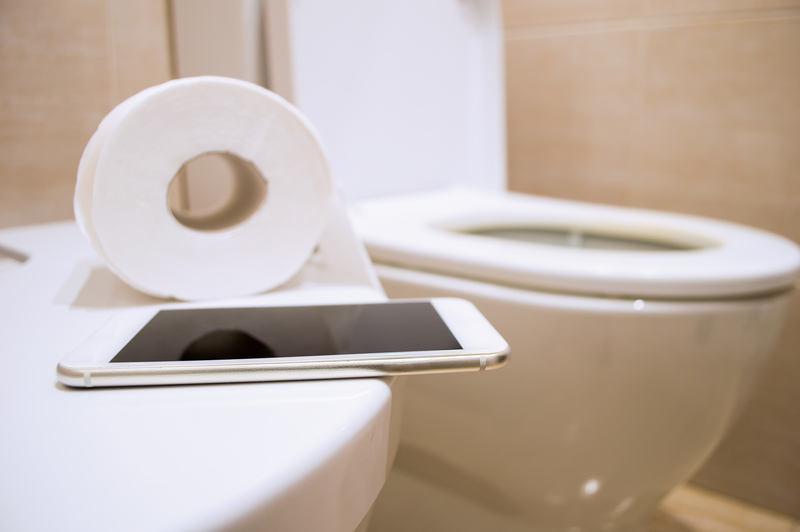Fresh Start: Eradicating Persistent Damp Odors
Posted on 30/08/2025
Fresh Start: Eradicating Persistent Damp Odors
Are stubborn damp smells taking over your home? Whether you live in a humid climate or have recently dealt with a leak, persistent damp odors can make indoor spaces feel unclean and unhealthy. This comprehensive guide will explain how you can achieve a fresh start by eradicating lingering damp odors once and for all.
Understanding Persistent Damp Odors
Damp odors, often described as "musty" or "moldy," arise from excessive moisture and often indicate underlying moisture problems within your home. Learning about the causes and health effects of these odors is the first step to a solution.
Main Causes of Damp Smells
- Water leaks from pipes, roofs, or foundations
- Poor ventilation, especially in basements, bathrooms, and closets
- Condensation from drastic temperature changes
- Flood damage
- Wet or improperly dried laundry left indoors
- Mold and mildew growth hidden behind walls or under floors
Health Risks Associated With Damp Odors
- Aggravation of allergies and asthma symptoms
- Breathing issues due to mold spores
- Increased risk of skin irritation
- Chronic coughs or headaches for sensitive individuals
Addressing persistent musty odors isn't just about improving comfort--it's essential for a healthy living environment. Now, let's dive deeper into solutions for eradicating stubborn damp smells.

Step 1: Identify the Source of the Moisture
The most critical step in any damp odor removal process is tracking down the root cause of the moisture. Without resolving the main issue, even the best odor removal techniques will only offer temporary relief.
Common Moisture Sources
- Roof Leaks: Water entering from compromised roofing materials may travel down walls or pool in attics.
- Leaky Plumbing: Hidden pipe leaks behind walls can dampen drywall and insulation, leading to a persistent musty smell.
- Basement Seepage: Cracks in foundation walls or high groundwater can let moisture in.
- Condensation: Cold surfaces, like windows and pipes, can sweat if humidity is high, causing damp conditions.
Look for visible mildew, bubbling paint, discoloration, or damp patches as clues to where moisture is accumulating. Engage a professional if you suspect a hidden leak or severe water damage, since undetected sources can cause costly structural damage over time.
Step 2: Fix the Source and Dry the Area
Stop Moisture Intrusion Immediately
- Seal roof and window leaks
- Repair broken pipes and plumbing
- Install or enhance vapor barriers in basements
- Use waterproof coatings on foundation walls
Once the source of water is addressed, it's crucial to thoroughly dry out affected areas. The faster you dry, the better chance you have of preventing mold and mildew growth.
Effective Drying Methods
- Use high-powered fans to increase air circulation
- Run a dehumidifier to pull moisture from the air
- Open windows (weather permitting) for ventilation
- Remove and replace water-damaged materials like carpet or drywall if necessary
Never attempt to mask persistent damp odors with air fresheners without drying the area first--this could worsen the problem over time!
Step 3: Eliminate Mold and Mildew
Mold and mildew are leading culprits of persistent musty odors. Once you've detected and remediated the moisture source, turn your attention to mold removal wherever it's grown.
DIY Mold Cleaning Solutions
For small surface patches on walls, ceilings, or tile grout:
- White vinegar: Spray full-strength and let sit for one hour before scrubbing and wiping clean.
- Baking soda: Combine with water to make a paste, scrub the affected spot, rinse, then dry thoroughly.
- Hydrogen peroxide (3% solution): Apply and let bubble for 10 minutes before scrubbing.
Caution: If you discover large infestations or mold in HVAC systems or insulation, seek help from professional mold remediators. Improper removal can spread spores and make health conditions worse.
Step 4: Deep Clean and Deodorize
Once moisture and mold are conquered, it's time to address any persistent damp odor left behind. This phase involves a deep clean, with a particular focus on porous materials like upholstery and carpet, which can trap odors.
Best Practices for Deep Cleaning
- Carpets & Rugs: Steam clean with a professional-grade cleaner. For small spots, sprinkle baking soda liberally, let sit, then vacuum thoroughly.
- Upholstery & Drapes: Wash in hot water if fabric allows, or use a fabric-safe enzyme cleaner. Air dry in direct sunlight when possible.
- Hard Surfaces: Wash floors, walls, and baseboards with a mixture of warm water and mild detergent, adding a splash of white vinegar for extra odor-fighting power.
- Mattresses & Pillows: Sprinkle with baking soda, let rest several hours, vacuum, then air out.
Natural Odor Absorbers
- Baking Soda: Place open containers in problem areas.
- Activated Charcoal Bags: Absorb and neutralize lingering damp smells over time.
- Coffee Grounds: Place in a bowl to soak up odors in closets and storage rooms.
Step 5: Improve Air Quality and Prevent Future Odors
Having achieved a fresh start with clean, dry surfaces and odor-free living spaces, it's time to prevent future persistent damp odors by optimizing ventilation and reducing humidity.
Simple Prevention Tips
- Use exhaust fans and open windows whenever possible in bathrooms, kitchens, and laundry rooms
- Maintain gutters and downspouts to ensure proper drainage away from your foundation
- Keep indoor humidity below 60%--ideally between 30-50% for mold prevention
- Store wet items like towels, clothing, and gym gear in well-ventilated areas
- Regularly inspect for signs of leaks or condensation, especially after heavy rain or snowmelt
- Replace HVAC filters regularly and have ducts professionally cleaned as needed
Long-Term Solutions
- Install a whole-house dehumidifier if moisture is a constant issue
- Seal basement floors and walls with waterproofing products
- Consider mold-resistant drywall or paints in high-humidity areas
- Use moisture-absorbing products in closets, cabinets, and under sinks
Frequently Asked Questions (FAQ)
How do I know if my damp odor problem is caused by mold?
The presence of visible mildew, black or greenish patches, or fuzzy growths--especially in high-moisture areas--strongly suggests mold. Musty, earthy smells that linger despite cleaning are often a sign that mold is growing out of sight. Professional testing can confirm mold if you're unsure.
What if the persistent damp odor won't go away?
If you've taken steps to fix leaks, dry out areas, and clean thoroughly but damp odors persist, the problem may be within your walls, insulation, or under flooring. In these cases, consult a water damage or mold remediation professional for a fresh assessment--and make sure you didn't miss any hidden sources of moisture or contamination.
Is it safe to use bleach for mold?
Bleach can kill surface mold on non-porous materials, but it's less effective on porous surfaces--and doesn't eliminate mold roots within drywall or wood. Use safer alternatives like vinegar or hydrogen peroxide for small tasks, and always wear gloves and ventilation protection.

Why Persistent Damp Odors Should Not Be Ignored
Persistent musty or damp odors are not just unpleasant--they signal potential hazards to your home and health. Lingering dampness can lead to expensive repairs, reduce property value, and compromise indoor air quality. By taking swift, strategic action, you ensure a cleaner, fresher, and safer home environment.
Conclusion: Enjoying a Fresh Start Free From Damp Odors
With the right strategy, you can eradicate persistent damp odors from your living spaces once and for all. Focus on identifying and eliminating moisture sources, drying thoroughly, cleaning deeply, and preventing future dampness with smart habits. Not only will you restore freshness to your home, but you'll also protect your loved ones from the risks associated with prolonged dampness and mold exposure.
Start today and enjoy a healthier, more inviting home environment--because everyone deserves a truly fresh start!
- What causes persistent damp odors?
- Is mold always present when there's a musty smell?
- How can I prevent damp odors after cleanup?
- Are there natural ways to eliminate persistent damp smells?
More Help: If you need further guidance on persistent odor removal, professional water damage restoration, or mold remediation, consider reaching out to a local expert for an on-site evaluation.





